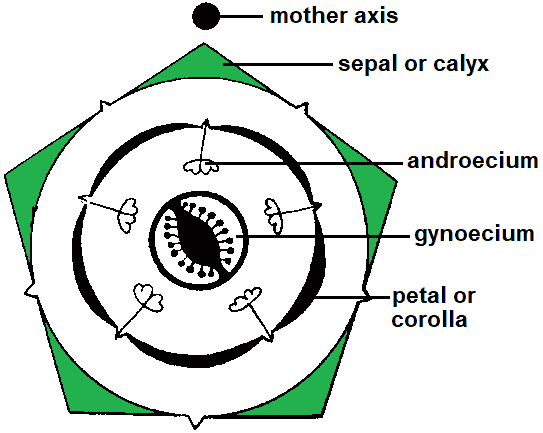(Upload on August 3 2025) [ 日本語 | English ]
Mount Usu / Sarobetsu post-mined peatland
From left: Crater basin in 1986 and 2006. Cottongrass / Daylily
HOME > Plant list (植物リスト) > Solanaceae (ナス科)
|
2500-3000 species in more than 100 genera (annuals, shrubs and rarely trees), mostly in tropical and temperate regions Inflorescence: cymose or solitary axillary Sepals and petals: united, plicate corolla Anther: connivent Leaf arrangement: alternate or spiral Atropa L. (オオカミナスビ)A. belladonna L. (オオカミナスビ)Brugmansia Pers. (キダチチョウセンアサガオ)Capsicum L. (トウガラシ)Datura L. (チョウセンアサガオ)Nierembergia Ruiz et Pav. (ギンパイソウ)N. frutescens Durieu (アマダマシ)N. gracilis Hook. (ヒメアマダマシ) |
N. rivularis Miers (ギンパイソウ)
Lycium L. (クコ)Nicandra Adans. (オオセンナリex)N. physalodes (L.) Gaertn. (オオセンナリ)Nierembergia Ruiz et Pav. (ギンパイソウ/アマモドキ), cupflowercultivarsPetunia Juss. (ツクバネアサガオ)Physalis L. (ホオズキ)Scopolia Lam. (ハシリドコロ)Solanum L. (ナス)Streptosolen Miers (マーマレードノキ)Streptosolen jamesonii (Benth.) Miers (マーマレードノキ), consisting of single species |
☛ Engler's syllabus (エングラー体系)  Floral diagram of Solanum nigrum |
[when separated from Datura]
|
Tree or shrub B. arborea (L.) Sweet (ピンクダチュラ) B. cornigera Hook. cv. grand manier (ニオイチョウセンアサガオ) |
B. sanguinea (Ruiz et Pav.) D. Don (ベニバナチョウセンアサガオ) |
B. suaveolens (Humb. et Bonpl. ex Willd.) Sweet (キダチチョウセンアサガオ) B. × candida Pers. (コダチチョウセンアサガオ) |
|
Flower: upward and infundibular Fruit: capsule (spines on the surface) |
D. ferox L. (ツノミチョウセンアサガオ) D. metel L. (チョウセンアサガオ) |
D. stramonium L. (ヨウシュチョウセンアサガオ, s.l.) D. wrightii Regel (ケチョウセンアサガオ) |
| L. barbarum L. (ナガバクコ) |
L. chinense Mill. (クコ) |
L. sandwicense A. Gray (アツバクコ) |
|
All are introduced to Japan for gardening Chromosome number: 2n = 14 (Calibrachoa, 2n = 18) P. parviflora Juss. ✂ P. hybrida (Hook. f.) Vilm. (ツクバネアサガオ) |
Calibrachoa Cerv. ex La Llave (ヒメツクバネアサガオ)Separated from Petunia, because of the chromosome numberChromosome number: 2n = 18 Flower: 2.5-3 mm in diameter C. parviflora (Juss.) D'Arcy (ヒメツクバネアサガオ) |
C. × hybrida, including C. amabilis (or C. amabile)PetchoaIntergeneric hybrid between Petunia × Calibrachoaused for gardening (not estabilshed in taxonomy) |
|
Fruit: enclosed by enlarged sepals P. acutifolia (Miers) Sandw. (ナガエノセンナリホオズキ) P. alkekengi L. (ホオズキ) P. angulata L
var. angulata (ヒロハフウリンホオズキ) |
var. pendula (Rydb.) Waterf. (アイフウリンホオズキ) P. chamaesarachoides Makino (ヤマホオズキ)P. grisea (Waterf.) M.Martinez (ショクヨウホオズキ) P. heterophylla Nees (ビロードホオズキ) |
P. ixocarpa Brot. ex Hornem. (オオブドウホオズキ) P. longifolia Nutt. var. subglabrata (Mack. et Bush) Cronquist (ウスゲホオズキ) P. peruviana L. (ブドウホオズキ) P. philadelphica Lam. (キバナホオズキ) P. pubescens L. (ヒメセンナリホオズキ) |
|
Eurasia (between Europe and Asia) Asia S. japonica Maxim. (ハシリドコロ) S. lutescens Y. N. Lee |
Europe S. carniolica Jacq. (ヨウシュハシリドコロ), European scopolia or henbane bell Syn. Scopolia atropoides Bercht. et J. Presl S. caucasica Kolesn. ex Kreyer |
Scopolia vs. AtropaFruit: pyxidium (蓋果) vs berryCalyx: cup-shaped vs distinctly lobed hairless (glabrous) vs pubescent Pistil: straight < corolla l vs. curved and exserted |
[many vegetables in this genus] Nomenclature: Shimizu (2003)
|
Fruit: not enveloped by sepals Seed dispersal: animal The most of all Solanum species are exotic to Japan Close to Common NightshadeS. luteum Mill. (Akamino inu-hozuki, アカミノイヌホオズキ), red fruitS. memphiticum Mart. (Murasaki inu-hozuki, ムラサキイヌホオズキ), (slightly-)purple stem |
S. nigrescens Mart. et Gal. (オオイヌホオズキ) S. nigrum L. (イヌホオズキ) [native, s.l.] S. physalifolium Rusby (Hime ke inu-hozuki, ヒメケイヌホオズキ) dense stem hairs. flower = 4-6 mm in diameter S. sarrachoides Sendtn. (Ke inu-hozuki, ケイヌホオズキ)dense stem hairs. flower = 7-9 mm in diameter |
OthersS. americanum auct. non Mill. (syn. S. emulans Raf.) (アメリカイヌホオズキ)S. carolinense (ワルナスビ) S. dulcamara L. (セイヨウヤマホロシ) S. japonense Nakai (ヤマホロシ) f. xanthocarpum H. Hara (キミノヤマホロシ) S. lyratum Thunb. (ヒヨドリジョウゴ)S. maximowiczii Koidz. (マルバノホロシ), south to Kanto District S. megacarpum (オオマルバノホロシ) S. sisymbriifolium Lam. (ハリナスビ) |